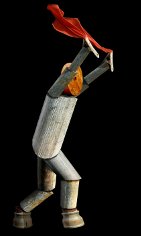Atomic Gallery
Large Hadron Collider Quilts and other textile pieces When I first came across images of the Large Hadron Collider, buried under Switzerland and part of France, I was struck by the amazing colours and patterns. I knew immediately that this machine would provide inspiration for me for a series of textile pieces. Physicists set out to build this machine for the purpose of studying subatomic particle activity, but it also happens to be a spectacularly beautiful and awesome object. I wanted to celebrate some of that beauty and symmetry in my work. As time has gone by, and I have continued to work on pieces inspired by the machine, I have found myself trying to understanding more about the physics. There is an interesting juxtaposition in scale \x96 this huge machine is looking for the tiniest sub-atomic particle to have a better understanding of the vastness of the universe. I started this series in the Autumn of 2008, and I am still producing new pieces. Working on one theme for a concentrated period of time allows a number of different design ideas to be explored in more depth. Ideas and experiments are recorded in a sketchbook and can be revisited a number of times. Large scale pieces are very time consuming to make, so I want to be sure I have an idea that is worth the time and effort of making. My earliest pieces in the series were all 60cm square. They were an experimental mix of fabrics, card, wire, beads and anything else that gave the effect I wanted to achieve. Like a magpie, I have been attracted to all manner of shiny things, in my search for items which would give the right effect. Fabrics have included silks, synthetics printed with holographic foils and plasticised fabrics like PVC. The construction of shapes needed to be mathematically accurate to simulate the complex machinery in the LHC. I have experimented with a number of techniques to achieve the effects I wanted, including laminating fabric to card, and also traditional foundation piecing of fabrics to get accurate shapes. This became very important as I moved onto my bigger pieces, which had circular sections . These had to be created in accurately drawn segments. There is little margin for error when making a circle in fabric that will lie flat! My biggest pieces are 2 metres across, and have been made as art quilts, using an applique technique. As well as using shiny synthetic fabrics and sheers, I have begun to dye and screen print fabrics too. I am moving away from the circle on a square motif that I have found so compelling for so long and I am beginning to explore ways of creating depth artificially on a two dimensional surface using perspective and scale to a greater extent. -- KateFindlay - 06 Mar 2012
- Parent page:
 HadronCollider
HadronCollider
Copyright © 1999-2025 by the contributing authors.
Comments and administrative requests to: webmaster@findlays.net
Please read the Important Information page.
Comments and administrative requests to: webmaster@findlays.net
Please read the Important Information page.